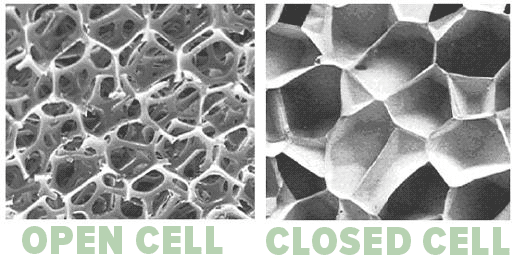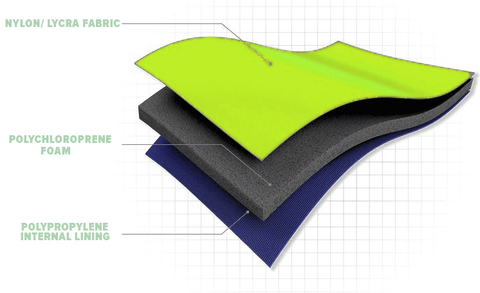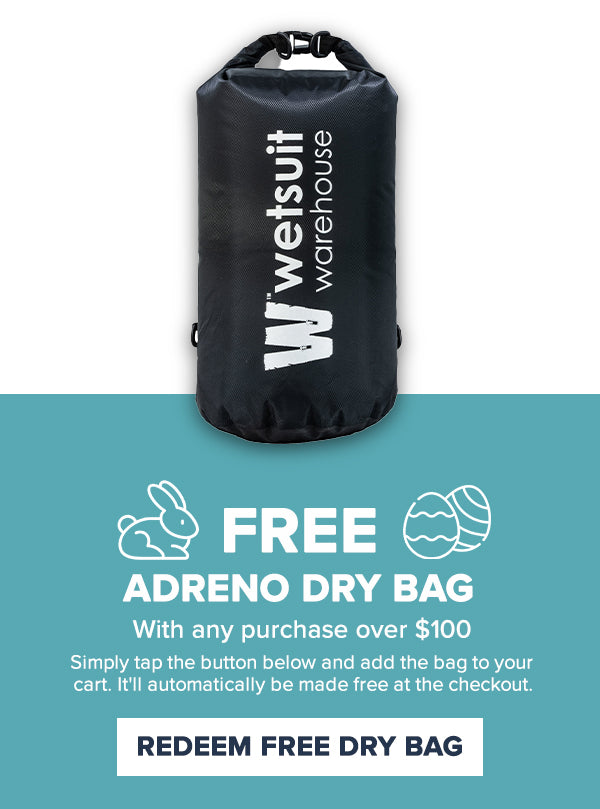Surf, Scuba, Spear and Freediving Wetsuits: How do they differ?
September 19, 2017 8 min read

The difference between surf, scuba and apnea wetsuits is in the details.
There are countless applications for the old neoprene body sock but as far as our wide reach in the wetsuit world goes the big three are Surf, Scuba and Spearfishing and there is much difference. I use the word vastly in the sense of wetsuits, not in the sense of the word vast as the differences are minute in presence but major in how they affect the suit’s performance. For the sake of this rant, I’ll be referring to the rubbery/foam insides as the ‘core’ and the exterior lining as the ‘jersey’.
Almost all variation that makes a real effect on performance lies in the density of the core and the ratio of rubber [polychloroprene] to ‘bubbles’: a low-density suit being one with many bubbles and not much rubber. Density of the neoprene affects everything about the suit and also where in the water column it will be most effective. Aside from the core density, we will look at the exterior and interior jerseys as well as zippers and seams.
What is the difference between Low-density and high-density Neoprene?
Wetsuits work by insulating your warm skin from cold water. Water is 25 times more effective at transporting heat, therefore, your body loses heat 25x quicker in the water. Think about the difference in 15-degree air vs 15-degree water, 15-degree water requires enough rubber to make you pool in sweat whilst standing in 15-degree air. I certainly couldn’t handle surfing 15 degree water in shorts and a hoody. With that in mind, it’s clear that if we’re chasing heat we want to wrap our body in the least heat-conductive material applicable to the demands of a wetsuit: stretchy, durable, stitch-able, buoyant, water permeability and memory. Unfortunately, a ceramic body suit wouldn’t be so comfy for us humans so they looked elsewhere, ending up at nitrogen within a closed cell medium that is impermeable to water.
Within this complete material a portion of insulation comes from the nitrogen within the closed-cell bubbles. More bubbles in the core means more warmth, which works great for surface applications like surfing! This is because the nature of gasses stipulates that a warmer suit also happens to be a stretchier suit!! That is assuming the bubbles are still ‘closed’ in nature, which is to say the walls individual bubbles do not dissect their neighbour. If the cell walls are 'open' that means water can pass through the cells , therefore, resulting in a sponge, not a wetsuit. On the other hand you’ve got scuba divers who dabble in depth and with great depth comes great pressure and with great pressure comes terrible wetsuit performance, but i’ll go deeper into compression below.
A point for Spearos about Open Cell: In the spearfishing wetsuit world it's common to hear the term 'open cell' but it is not referring to the nature of the cells - it is referring to no internal lining in the wetsuit. No lining creates a better seal as the cells can work like suckers to create the best seal but the combination of this plus the 'tackyness' of the rubber itself means you need to lubricate before donning the suit.
The scuba wetsuit paradox.
Core density in a scuba suit, most are made with the higher density and lower nitrogen content, therefore, retaining thickness at depth. This is why scuba suits tend to feel much stiffer than other wetsuits and, unlike all other wetsuits, the stretch is not a sign of quality, moreso a sign of poor design… The Geoprene / Limestone Neoprene movement rallies behind the notion that limestone neoprene has smaller individual cell structure size, therefore fitting in a greater number of cells, which sounds great but does not have any bearing on the total volume of nitrogen present in the suit, thus making the measure subjective. If there are more cells, resulting in a greater volume of nitrogen then I can see an advantage there but without a qualitative measure of cell volume we can’t be sure- the thinking is right, that is for sure.
Don’t get me wrong, I think every move to make any product more ecologically viable is a great thing but on the other hand, green-washing is the worst thing we can do but let's face it, the only ‘green’ wetsuit is the one that's already in your cupboard- not throwing your current suit out to go by a suit that's made from incinerating mercury-laden car tyres.

Can I use my Surfing wetsuit for Scuba diving?
Yes for sure! A few leading surf brands make scuba suits too but bear in mind that surfing suits are best suited for the surface and lose efficacy with depth, but they'll feel great! I tend to dive in a surfing springsuit when in climates that require no wetsuit, to prolong my session and dive times by minimising thermogenisis - the bodies internal heating mechanism that burns energy for warmth.
Wetsuits compress with depth.
Depth and the compression that comes with it makes life hard for everyone and everything that experiences it. There are competitive no-limit free-divers which regularly experiences lung compression from 9 litres down to 0.4L, that’s a big deal- ~4.5x 2L milk bottles down to a regular coffee cup.. That exact mechanism is affecting the nitrogen bubbles on the core. However not many people scuba dive down to 200m, but the principle stays the same. As you descend into colder and deeper water, your wetsuit gets thinner and less effective at insulating, on the other hand it tends to improve the seal at wrist/neck/ankle points.
Although, if your suit has pockets of air, resulting from a poor fit, the compressive forces will force water into the suit in order to equalise the decreasing volume within said pocket. These two design problems are why many cold-water divers opt for a Dry-Suit. A Dry-Suit is one that maintains a complete dry environment within the suit through a complete seal and impermeable materials but raises technical difficulties such as buoyancy regulation. Without a supply of compressed air one can’t dive with a dry-suit unless they’re OK with drowning.

What is a Surfing wetsuit made out of?
The standard layup of surfing wet suit neoprene is a closed-cell foam core, lined with nylon/polypropylene/polyester/spandex/lycra however there have been many advancements into different linings, such as polyester, merino wool and more.
Jeryseys - Polypropylene vs Polyesters vs Merino Wool vs Nylon/Lycra.
The lining of a wetsuit is at the forefront of wetsuit design because it’s all we get to have a proper look at! The standard nylon/lycra fabric external is used to add durability to the suit. As an example, un-lined freediving/spearfishing wetsuits are warmer than every surfing wetsuit but are so fragile that without lubrication you can easily tear the suit into little pieces simply trying to put it on, that’s if your fingernails didn’t do it already. A jersey is implemented by laminating to the core foam, bonded by glue. Within the suit, there have been many variations to the standard nylon jersey, materials like polyester, polypropylene, merino wool and titanium, all of which are designed to improve the heat reflectance within the suit. They do this by wicking water away from your core/vitals and by holding air pockets within the weave (that's in part how Seals and Penguins stay warm, air pockets)

A typical poly-fleece lining is used to make the wetsuit 'dryer' because of the hydrophobicnature of polyester. Lined wetsuits are generally warmer.
Polyester poisoning via Fish.
Polyester and polypropylene liners are hydrophobic, meaning such panelling will force water to move away from the vitals thus keeping that zone almost dry, therefore warmer thanks to air’s limited heat transfer. My only problem with PET and PP is the micro-fibres that are shed from these materials account for 70% of the small petrochemicals being ingested by the fish we eat. On the other hand merino wool presumably has less of a negative impact but is too small to warrant proper research. There's a very eye-opening report on this particular kind of plastic poisoning on Catalyst.
Unlined: often referred to as 'Open Cell'
Finally, let's take a look at the unlined internals. These types of suit are often referred to as ‘open cell’ and in the sense of the lining it is kinda true but ALL wetsuits are made closed-cell and over time, as the cell walls erode, they become open-cell, just like a sponge. They’re named as such because the manufacturing process is the same as a fully lined suit. A complete sheet is then cut in half, producing 2 sheets of 1 lined and 1 unlined side. This bisection causes the bubbles along the site of incision to be exposed to the skin which in turn perform like octopus suckers. This suction achieves the warmest possible wetty because it denies flow of water through the suit. Unfortunately, bare neoprene is so sticky one needs to lubricate before entering an open cell wetsuit or risk a catastrophic tear. I’ve seen suits ripped in two before they even left the change room...
What is a smooth-skin wetsuit, also known as 'coated' noeprene?
On the exterior, it’s common to find smooth elastomers [smooth-skins] that reduce wind chill by wicking water away from the surface thanks to the hydrophobic nature of closed-cell elastomers. Smooth-skins are great for boat diving in cold climates and for use around your vitals in a surf suit. If you’ve seen competition freediving wetsuits you’ll note they glow. This is simply a smooth-skin exterior coloured in a manner that allows them to sparkle, just like the divers. It’s a great material for flexibility and staying warm in the wind but look at it the wrong way and you’ll have tiny nicks and cuts in places you didn’t know existed (fragile). Going back to polyester, this is the makeup of the thermal that you commonly see on the chest of a good quality steamer.

A coated wetsuit, often called smooth-skin, is the best layup in terms of reducing wind-chill.
Zippers - the best one is none at all.
The best zip is no zip. We go into great detail about the zipper mechanics in a previous blog post. Today surfing suits are tending towards chest enclosures as they maximise paddle flexibility, back flexibility and limit cold water flushing. Unfortunately, all zips are inherently permeable to water. However, backing the zipper with neoprene forces the water to exit the suit. Free diving and Spearfishing suits are almost entirely two-piece, hooded and free of zippers. For breath-hold [Apnea] diving one needs to maximise torso stretch as to avoid restricting one’s ability to breath up maximally. Not only does removing the zip increase stretch it reduces hydrodynamic resistance and best of all allows the inclusion of a hood without negating neck seal. And finally, we’ve got scuba suits, the dark-child of wetsuit design. Typically they’ve got HUGE zippers, meaning huge problems with flushing. Freediving and spearfishing suits lack a zipper so instead of closing around the body, one simply anchors the jacket to the torso through a beaver tail [crotch strap]. The seal is made by the overalap of the jacket ontop of the pants. Typically the pants are either extremely high waisted or a 'john' style.
Seams
For the run-down of difference between seams check out this exposé. Surfing and Apnea divers prioritise flexibility whereas divers priorities seal. In saying that, all decent surfing and apnea suits run a sealed seam, GBS or Taped. We are seeing more taped suits emerge in the apnea world but they’re reducing flexibility in order to increase durability. Personally, durability is THE most important part of a wetsuit and the most environmentally friendly. Scuba suits have a strait forward time when it comes to the seam, being that they don’t stretch much. This limitation of stretch due to neoprene density allows ‘tightest’ stitch and choke it with glue without limiting overall stretch. It’ll keep you warm but best of all are typically the longest lasting of all wetsuit forms!
Leave a comment
Comments will be approved before showing up.


